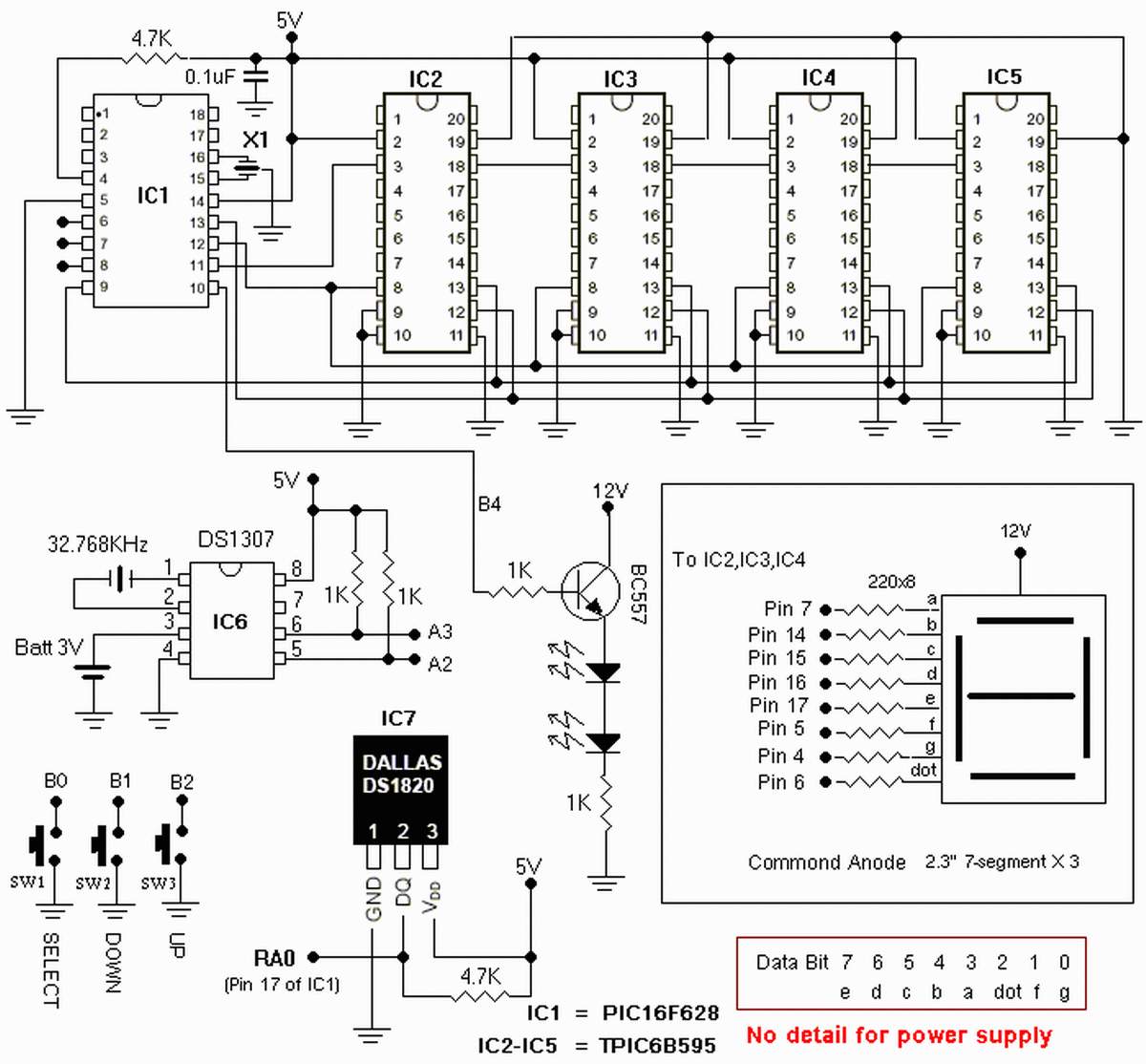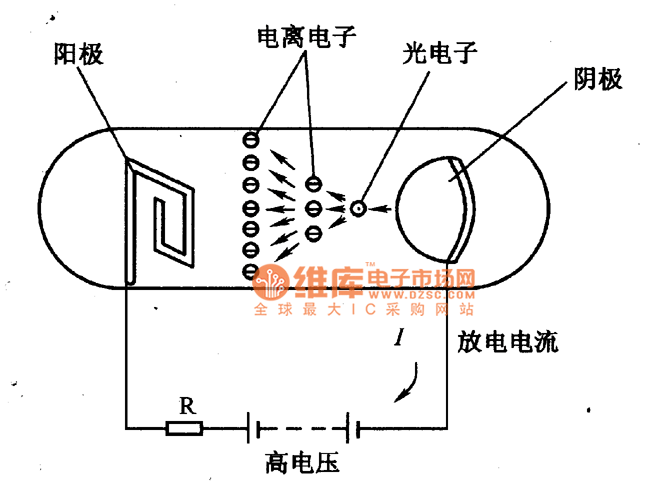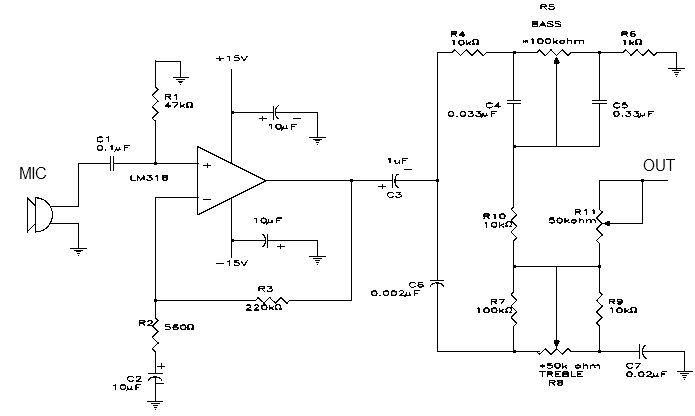
Clock circuit circuit

The clock is based on the PIC16F877 microcontroller from Microchip Technology Inc., which performs all of the logic necessary to decode the MSF signal and display the time on twelve 7-segment displays.
The circuit design incorporates the PIC16F877 microcontroller, a versatile 8-bit device well-suited for handling timekeeping functions. The microcontroller is responsible for decoding the MSF time signal, which is transmitted by the National Physical Laboratory in the UK. This signal provides accurate time information that the microcontroller interprets to maintain precise timekeeping.
The system utilizes twelve 7-segment displays to visually represent hours, minutes, and seconds. Each display is driven by a dedicated output from the microcontroller, allowing for simultaneous representation of time in a clear and user-friendly format. The displays are typically connected through a combination of resistors and transistors to manage current flow and ensure optimal brightness without damaging the segments.
To facilitate the decoding of the MSF signal, the circuit includes a suitable RF receiver module that captures the transmitted time signal. The microcontroller processes the incoming data, extracting the necessary information to set and update the internal clock. Additional components such as capacitors and voltage regulators may be included to stabilize the power supply and filter noise, ensuring reliable operation.
In terms of user interface, buttons may be incorporated to allow for manual adjustments, such as setting the time or toggling between 12-hour and 24-hour formats. The design may also include a power backup system, such as a battery, to maintain timekeeping during power outages.
Overall, this clock circuit exemplifies a practical application of microcontroller technology in timekeeping, combining RF signal processing with digital display management to create an accurate and visually appealing timepiece.The clock is based around a the PIC16F877 microcontroller from Microchip Technology Inc, which performs all of the logic necessary to decode the MSF signal and show the time on twelve 7-segment displays. 🔗 External reference
The circuit design incorporates the PIC16F877 microcontroller, a versatile 8-bit device well-suited for handling timekeeping functions. The microcontroller is responsible for decoding the MSF time signal, which is transmitted by the National Physical Laboratory in the UK. This signal provides accurate time information that the microcontroller interprets to maintain precise timekeeping.
The system utilizes twelve 7-segment displays to visually represent hours, minutes, and seconds. Each display is driven by a dedicated output from the microcontroller, allowing for simultaneous representation of time in a clear and user-friendly format. The displays are typically connected through a combination of resistors and transistors to manage current flow and ensure optimal brightness without damaging the segments.
To facilitate the decoding of the MSF signal, the circuit includes a suitable RF receiver module that captures the transmitted time signal. The microcontroller processes the incoming data, extracting the necessary information to set and update the internal clock. Additional components such as capacitors and voltage regulators may be included to stabilize the power supply and filter noise, ensuring reliable operation.
In terms of user interface, buttons may be incorporated to allow for manual adjustments, such as setting the time or toggling between 12-hour and 24-hour formats. The design may also include a power backup system, such as a battery, to maintain timekeeping during power outages.
Overall, this clock circuit exemplifies a practical application of microcontroller technology in timekeeping, combining RF signal processing with digital display management to create an accurate and visually appealing timepiece.The clock is based around a the PIC16F877 microcontroller from Microchip Technology Inc, which performs all of the logic necessary to decode the MSF signal and show the time on twelve 7-segment displays. 🔗 External reference





